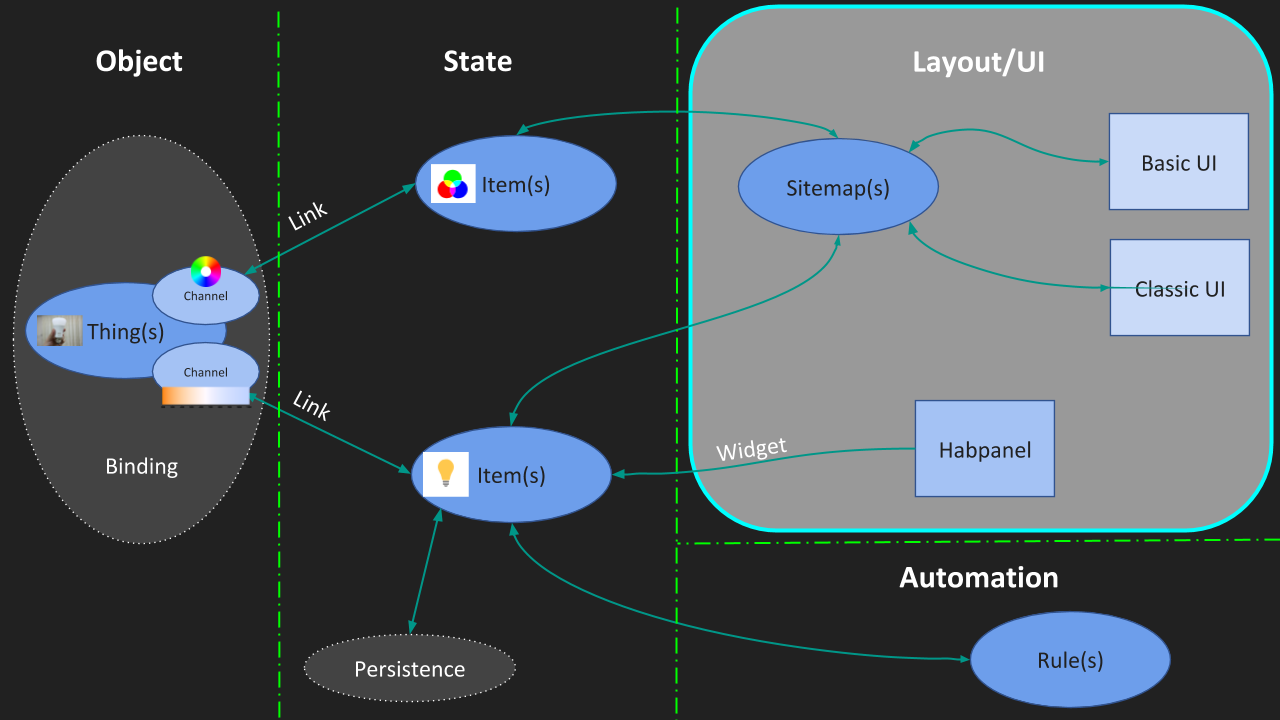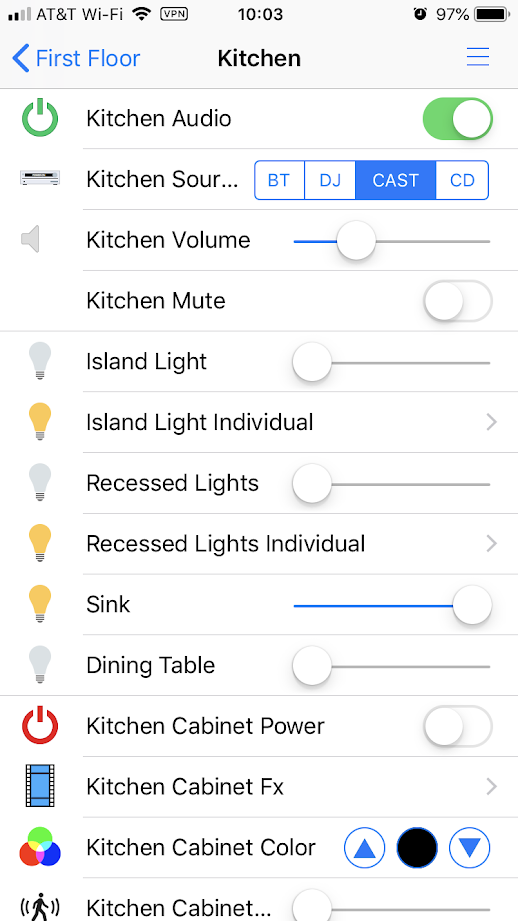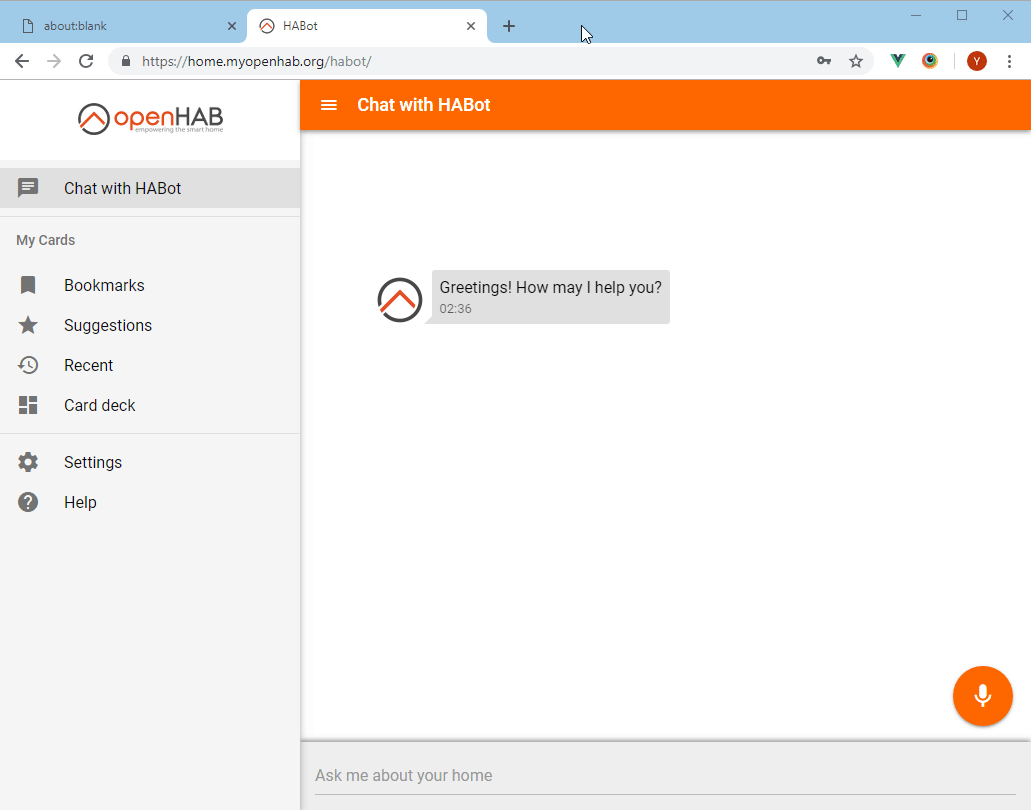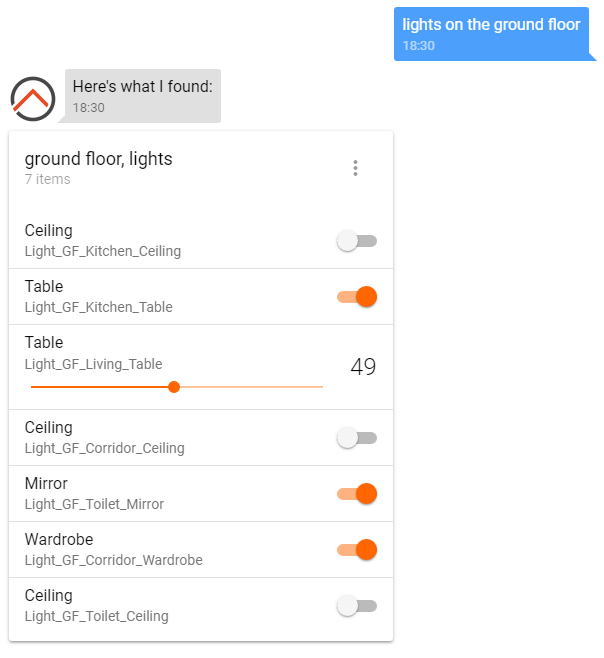Watch a video to see just how easy it is to build an interface with HabPanel
Control interfaces
In this section you learn about the fun part of setting up your openHAB system - the user interface! This is the most rewarding part of your configuration. You’ll now actually get to see real-time results of all your work until now, and interact with your home automation things directly via the user interface.

This is where you need to leave "Setup and Maintenance" ☹.
We have different concepts implemented in the openHAB 2 core for interaction and the community has provided even more. Depending on the Add-ons you have installed, you get direct support for Apple HomeKit (and its control Apps), Amazon Alexa and the corresponding applications, or any Hue App to control your setup. But we also provide some Apps ourselves, see below.
Widgets everywhere - HABpanel

HABpanel is a touch-friendly user interface for tablets. It layouts your Items via so called Widgets.
Widgets are html with javascript snippets and can therefore express any design and functionality. We have a default set of Widgets for rendering our known Item types. The community also created dedicated Widgets for Spotify, Alexa, Weather services and so on.
If you had nothing but computers and tablets controlling your home automation system, you could easily get away with only using HABpanel.
Make sure you have installed HABpanel in the Add-ons section.
Dashboards - HABdashboard

Widgets tend to use a lot of screen real-estate and often require configuration. For the phone screen and also for kickstarting your control needs, there is a better option.
openHABs second solution for control interfaces are Dashboards.
Dashboards define the layout and handling of items, and tell dashboard based user interfaces how to interact with your Items. You would use Dashboards to:
- Group Items per Room
- Use binding provided dashboard components. Those are compositions of related Items to form more complex controls.
openHAB provides a "dynamic" dashboard, that is auto-layouted and grouped by Things and Channels.
Make sure you have installed HABdashboard in the Add-ons section.
Cards & Chat UI - HABot

HABot is a natural language interpreter. You can ask it questions about your items in plain language, or perform actions. HABot uses machine-learning natural language processing to figure out what you mean.
In this regard, it's similar to voice assistants like Alexa, Siri, Google Assistant or Cortana, but is focused on your openHAB smart home. No cloud service required.

A major feature of its chat-based user interface is that it will also provide visual information in the form of a “card” along with the natural language answer. These cards may contain read-only information or interactive controls like switches, sliders and buttons.
A common use case for HABot is to ask it to find items in a natural way, instead of giving an order.
For example to ask for the “lights on the first floor” and to use the controls on the card.
Make sure you have installed HABot in the Add-ons section.
Android / iOS App
If you want to enjoy the native speed of your phone platform and a fluent, animated and integrated interface consider our mobile apps. Both Apps use Dashboards for displaying your Items.